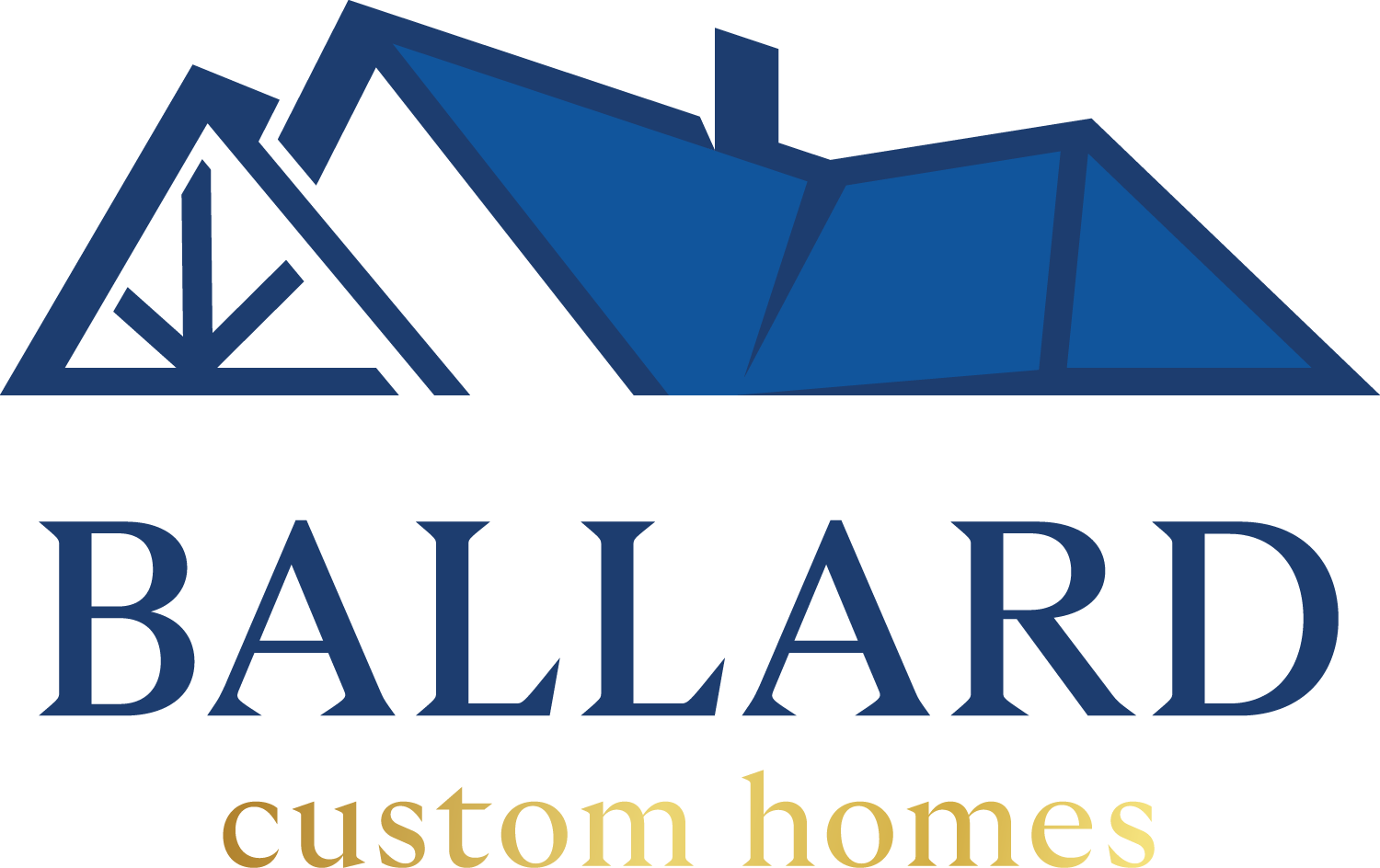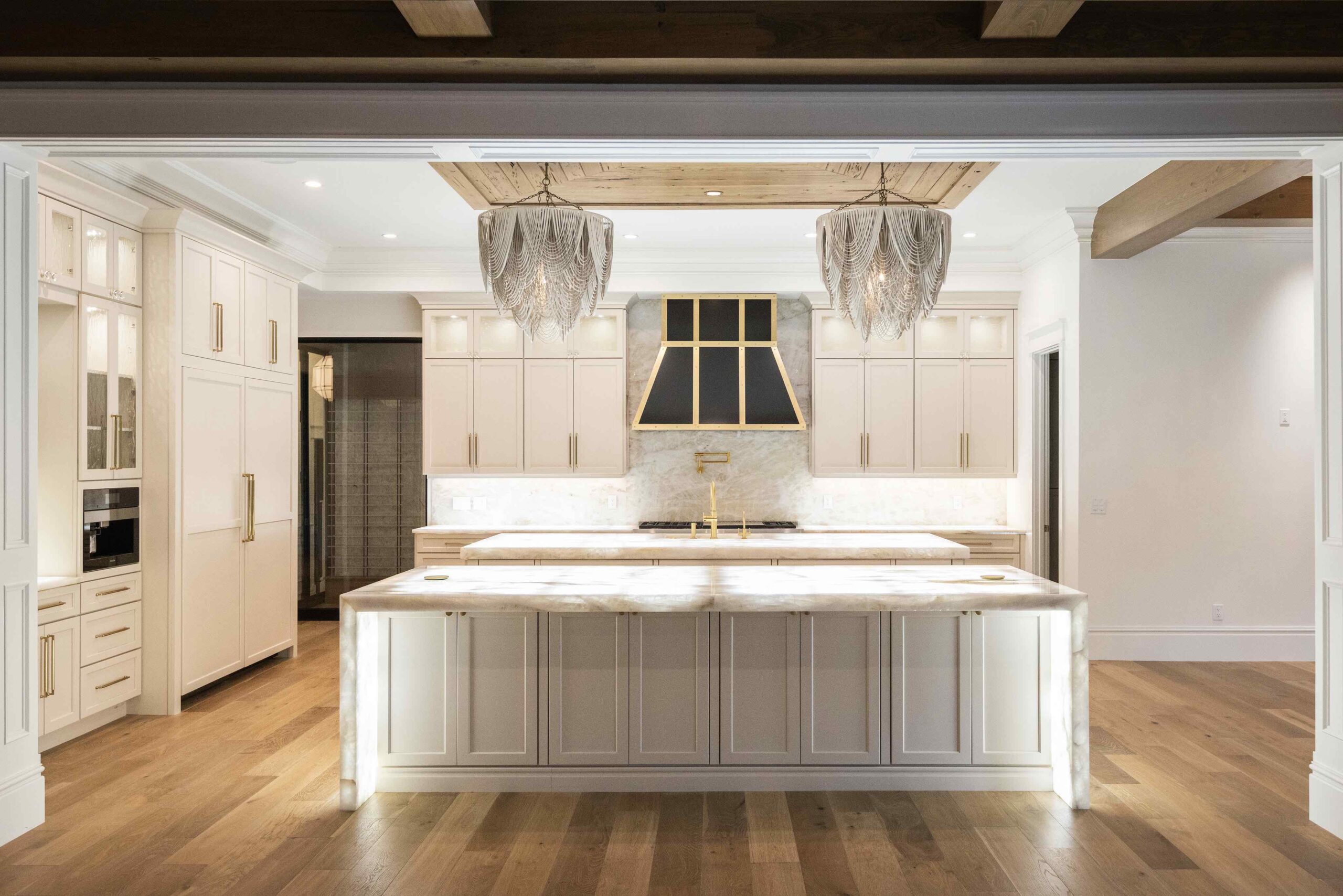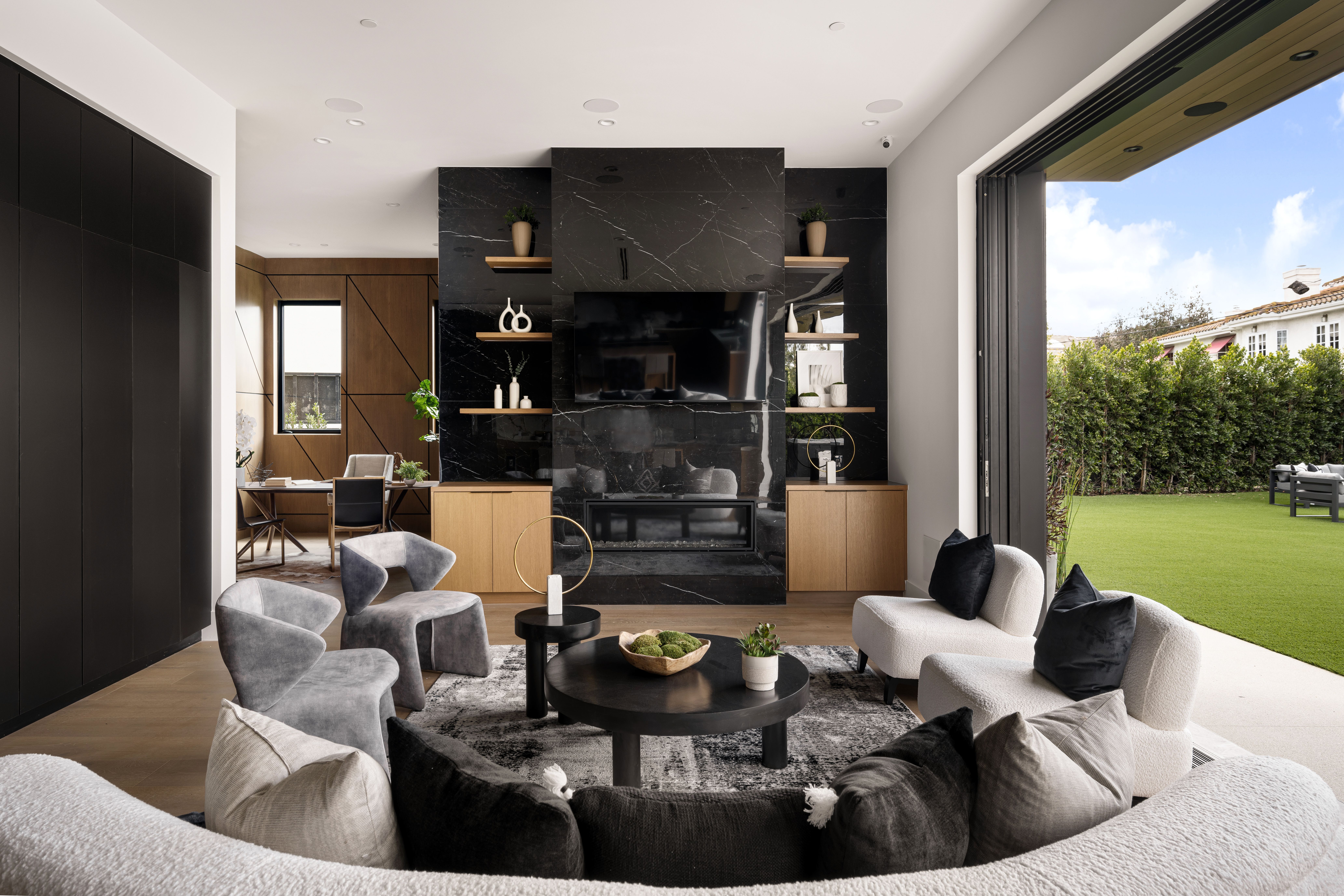Essential Tips for Budgeting Unexpected Costs in Custom Home Construction Projects
Building a custom home is an exciting journey, but unexpected costs can swiftly turn dreams into financial strain. Understanding how to budget for unforeseen expenses is crucial in managing your project effectively. This article will discuss establishing a comprehensive budget, implementing cost monitoring strategies, and working with professionals to navigate financial challenges. By addressing these areas, readers will learn to minimize surprises and keep their projects on track, ensuring a smoother and more predictable building experience.
Understanding the Concept of Unexpected Costs in Custom Home Construction
Custom home construction, such as that undertaken by Ballard Custom Homes, involves numerous components, including additions and renovations, and unexpected costs can arise at any stage of the process. These expenses often stem from changes in material prices, such as concrete for the foundation or alterations in the design that impact overall scope and timelines.
One major aspect that can lead to unexpected costs is the roof installation. If the initial budget does not account for fluctuations in roofing materials or the complexity of the design, homeowners may experience unplanned financial burdens. Identifying these factors early helps in effective budgeting.
Interior design choices also play a significant role in determining the final project cost. Failing to include allowances for high-quality finishes or custom features can result in surprise expenses later. This highlights the importance of thorough planning during the design phase to ensure all elements are financially accounted for.
Operational efficiency is another consideration when budgeting for unexpected costs. Construction delays, often caused by unforeseen issues, can increase labor costs and affect the overall timeline. Developing contingency plans that allow for flexibility can mitigate some of these challenges.
Establishing a Comprehensive Budget for Your Custom Home
Identifying common sources of unexpected expenses is essential in the budgeting process for a custom home. This includes aspects like fluctuations in air conditioning costs and flooring materials. Allocating a percentage of the overall budget for contingencies allows homeowners to navigate the inherent uncertainty of construction projects more effectively. Understanding these elements ensures a smoother financial experience throughout the build.
Identifying Common Sources of Unexpected Expenses
One common source of unexpected expenses in custom home construction arises from fluctuations in material costs. As prices for essential components such as roofing, flooring, or HVAC systems can change, having visibility into current market trends can facilitate better planning. An experienced estimator can help homeowners gauge these potential increases, ensuring that the budget remains adaptable to unforeseen price fluctuations.
Design changes present another significant challenge during the construction of a custom home. Modifications to architectural elements often demand alterations in materials or labor, which can lead to higher costs. Effective accounting during the initial phases is paramount, as it helps capture all necessary adjustments in the budget and minimizes the likelihood of surprises once construction begins.
Weather-related delays can significantly alter timelines and, consequently, project budgets. Construction schedules impacted by poor weather conditions often result in increased labor costs and the need for additional materials. Ensuring that there is room in the overall budget for these potential delays will help maintain financial stability throughout the custom home building process, allowing for a smoother experience.
Allocating Funds for Contingencies in Your Budget
Allocating funds for contingencies is a crucial part of establishing a comprehensive budget for custom home construction. Property taxes can fluctuate during the construction timeline, and setting aside a portion of the budget for such variations ensures homeowners are not caught off guard. This proactive approach allows for a more stable financial footing throughout the building process.
In addition to property taxes, homeowners should consider setting aside funds to account for potential interest increases on loans. As the market shifts, interest rates may change, impacting overall project costs. By anticipating these changes and integrating them into the budget, homeowners can preserve their profits and maintain control over their financial commitments.
Utility costs can also change unexpectedly due to various factors, including shifts in energy prices during the project’s duration. Conducting thorough data analysis around these expenses can guide homeowners in making informed financial decisions. Taking into account potential increases in utility costs as part of the contingency fund ensures that the project remains within budget and financially viable well into the future.
Implementing Effective Cost Monitoring Strategies
Utilizing technology for real-time expense tracking enhances transparency between homeowners and subcontractors, helping manage property budgets effectively. Regularly reviewing and adjusting budgets not only fosters organization but also prepares homeowners for potential fluctuations in costs. These strategies ensure a proactive approach to unexpected expenses, reinforcing the project’s financial stability throughout the custom home construction process.
Utilizing Technology for Real-Time Expense Tracking
Employing technology for real-time expense tracking can significantly enhance the management of budgets in custom home construction. Homeowners can use project management software that integrates cost tracking features, allowing them to monitor expenditures related to materials like steel and labor in real time. This proactive approach ensures that the contingency fund remains intact, preventing any financial surprises during the building process.
For instance, when working on elements such as a basement, having visibility into current costs enables homeowners to make informed decisions on which features to prioritize. If unexpected expenses arise—such as additional heating requirements due to design changes—tracking these costs in real time helps adjust budgets accordingly. By staying updated on fluctuating prices, project managers can allocate resources effectively, ensuring continuous alignment with the overall financial plan.
Furthermore, regularly updating expense reports through technological solutions fosters clear communication between homeowners and subcontractors. This transparency can identify areas where costs can be reduced or where adjustments must be made to the contingency fund. By utilizing effective tools, homeowners can maintain control over their custom home budgets and ultimately achieve their construction goals with greater ease.
Regularly Reviewing and Adjusting Budgets
Regularly reviewing and adjusting budgets is crucial in custom home construction to ensure financial stability throughout the project. Establishing a routine for budget assessments allows homeowners to identify variances early, enabling timely adjustments based on current expenses and market fluctuations. This proactive approach can prevent financial strains that may arise from unexpected costs during the building phase.
Integrating effective budgeting practices, such as outsourcing financial management tasks to experts, can enhance accuracy in budgeting assessments. Experienced professionals can conduct thorough surveying of costs related to building codes, materials, and labor, ensuring that evolving market values and associated expenses are accurately reflected. This collaboration not only fosters informed decision-making but also reduces the risk of overlooked budget components.
Adjusting budgets in response to real-time data can significantly impact the success of home construction projects. By continuously analyzing cost trends and remaining alert to potential changes in construction requirements, homeowners can maintain alignment with financial goals. For example, if actual costs begin to increase due to regulatory updates or material shortages, timely adjustments can safeguard the project’s viability and help secure the desired quality.
Building a Flexible Budget Plan for Custom Home Projects
Incorporating varied scenarios into budget planning is essential for managing unexpected costs in custom home construction. Homeowners should create a buffer that takes into account potential shifts in market trends, zoning regulations, and even enhancements like solar energy. By understanding the importance of safety and integrating environmentally friendly options, a flexible budget plan can effectively address unforeseen financial demands.
Incorporating Varied Scenarios in Budget Planning
Incorporating varied scenarios into budget planning for custom home construction requires a proactive approach to manage potential cost overruns effectively. Homeowners should assess the likelihood of unexpected changes in contract terms, such as increased labor costs in framing or challenges with the installation of features like lighting. By anticipating these scenarios, individuals can set aside additional funds and ensure a clearer path through the construction process.
Understanding market fluctuations and regional trends is essential for making informed decisions when planning budgets. For instance, aligning with resources from the National Association of Realtors can provide insight into pricing trends for materials and labor, helping to establish a more adaptable financial framework. Homeowners can benefit from integrating these insights into their flexible budget to accommodate unforeseen updates or requirements that may arise during the build.
As construction projects advance, the possibility of design adjustments can significantly impact costs. Establishing a flexible budget allows homeowners to incorporate extra expenses that may emerge from changes in materials or finishes. By allocating resources for these variations, clients can enhance their overall project satisfaction while minimizing stress related to unexpected financial burdens.
Creating a Buffer for Unexpected Financial Demands
Creating a buffer for unexpected financial demands in custom home construction is a vital part of the budgeting process. This approach emphasizes the importance of efficiency in planning, allowing homeowners to allocate a specific percentage of their budget for unforeseen costs. By incorporating this buffer from the beginning, they can manage potential surprises without compromising their overall vision.
Due diligence plays a crucial role in establishing this financial safeguard. Homeowners should work closely with a real estate agent and other professionals to assess all possible costs associated with their projects, including potential increases in materials and labor. By investing time to understand the implications of home automation and other modern features, they can adjust their budgets accordingly and mitigate the risk of encountering financial strain later on.
Value engineering should also be considered when creating a buffer for unexpected costs. Homeowners can identify opportunities to save on essential elements while maintaining quality, ensuring that their budget remains adaptable to changes. This proactive stance not only secures peace of mind but also enhances satisfaction throughout the construction journey, empowering clients to focus on their dream home without the weight of financial uncertainties.
Working With Professionals to Navigate Financial Challenges
Engaging contractors with strong financial practices is essential for successfully navigating budgeting challenges in custom home construction projects. Homeowners should focus on negotiation skills and an understanding of the supply chain to mitigate unexpected costs. Leveraging financial advisors can further enhance informed decision-making, ensuring sustainable choices, such as selecting granite and maximizing daylight in design, while effectively managing budgets.
Engaging Contractors With Strong Financial Practices
Engaging contractors with strong financial practices is essential for homeowners navigating the complexities of custom home construction. A well-structured construction contract outlines financial responsibilities and ensures clarity throughout the project. This focus on financial transparency helps in addressing potential unexpected costs early in the process, reducing stress and enabling better decision-making.
Contractors with a keen understanding of budgeting are invaluable for transforming blueprints into reality while managing expenses. Their skill in managing resources and materials can prevent budget overruns that often occur due to unforeseen circumstances. By collaborating with contractors who prioritize financial discipline, homeowners can benefit from practical strategies that maintain the beauty and integrity of their design vision while staying within budgetary constraints.
Additionally, experienced contractors often have established relationships with suppliers, which can lead to cost savings and more efficient project timelines. By leveraging these connections, homeowners can better manage materials’ costs and avoid common financial pitfalls in construction. Focusing on partnerships that combine technical skill with sound financial practices equips homeowners to handle the unexpected without compromising their dream home project.
Leveraging Financial Advisors for Informed Decisions
Engaging financial advisors can significantly enhance a homeowner’s capacity for navigating the complexities of custom home construction. With expertise in construction management, these professionals help identify potential financial challenges related to various aspects, including procurement of materials such as stucco and siding. Their guidance aids in establishing a budget that promotes financial stability throughout the building process.
Financial advisors assess changing market conditions and material costs, empowering homeowners to make informed decisions. For example, they can analyze trends in the pricing of siding, allowing for timely and strategic procurement that mitigates unexpected expenses. By incorporating this knowledge into the project’s financial framework, homeowners can effectively manage their overall costs while ensuring that their construction vision remains intact.
Furthermore, leveraging financial advisors provides a clear advantage in planning for contingencies. They help set aside funds for unforeseen costs that may arise due to supply chain disruptions or fluctuations in material availability. This proactive approach not only safeguards the project’s financial health but also reinforces the homeowner’s confidence that they are prepared for any challenges that may come their way during construction.
Frequently Asked Questions About Budgeting for Unforeseen Costs
Understanding the primary reasons for exceeding budgets in custom home construction is essential. Factors such as fluctuations in material costs—like wood pricing or carpet choices—can significantly impact overall finances. Additionally, effective communication about budget changes to stakeholders is vital. Addressing issues related to liability insurance and maintaining a clear workflow ensures that all parties remain informed and engaged throughout the project.
What Are the Top Reasons for Going Over Budget?
One of the primary reasons for exceeding budget constraints in custom home construction is unexpected changes during the inspection phase. If the inspection reveals problems such as structural issues or code violations, it may necessitate costly repairs or adjustments. Consumers should be aware that these unforeseen complications can significantly increase overall expenses and stress the importance of hiring a reliable general contractor who can help navigate these challenges effectively.
Another contributing factor to budget overruns is the procurement process. Delays in material sourcing can disrupt timelines and lead to increased costs if prices rise during the waiting period. Using procurement software can streamline this process, ensuring timely acquisition of necessary materials, thus reducing the likelihood of financial risk associated with fluctuating prices.
Design modifications, particularly in high-cost areas like bathrooms, also often drive expenses beyond initial estimates. Homeowners should consider that alterations to layouts or selecting upscale finishes can quickly add up. Engaging with experienced professionals early in the design phase can help ensure that these choices align with the budget, minimizing the potential for surprises as the project progresses.
How Can I Effectively Communicate Budget Changes to Stakeholders?
Effective communication with stakeholders about budget changes requires transparency and timely updates. Utilizing project management software can facilitate this process by providing clear visuals on budget adjustments that correlate with specific phases of the building project. For instance, if expenses related to the sanitary sewer installation increase, stakeholders should be informed promptly to assess the implications on the overall budget and timeline.
When discussing budget changes, it is beneficial to present detailed cost breakdowns that explain how each component, such as square foot costs or bulk purchasing of materials, affects the financial scope of the project. This clarity helps stakeholders understand the reasons behind adjustments and fosters trust in the custom home builder overseeing the construction. A well-informed client is more likely to engage positively in discussions regarding financial matters.
Furthermore, proactive communication enables stakeholders to contribute to finding solutions for budgetary challenges. If unexpected costs arise, engaging them in discussions about options—such as revisions to design plans or exploring alternative materials—can create a collaborative atmosphere. This approach not only addresses immediate financial concerns but also strengthens the working relationship between the custom home builder and clients throughout the construction process.
Conclusion
Budgeting for unexpected costs in custom home construction is vital for ensuring financial stability and project success. Homeowners must identify common sources of unforeseen expenses and allocate contingency funds to address potential financial challenges. Engaging experienced professionals and utilizing technology for real-time tracking empowers clients to make informed decisions throughout the building process. By implementing these essential strategies, homeowners can navigate the complexities of construction with confidence and achieve their vision without compromising their budget.




